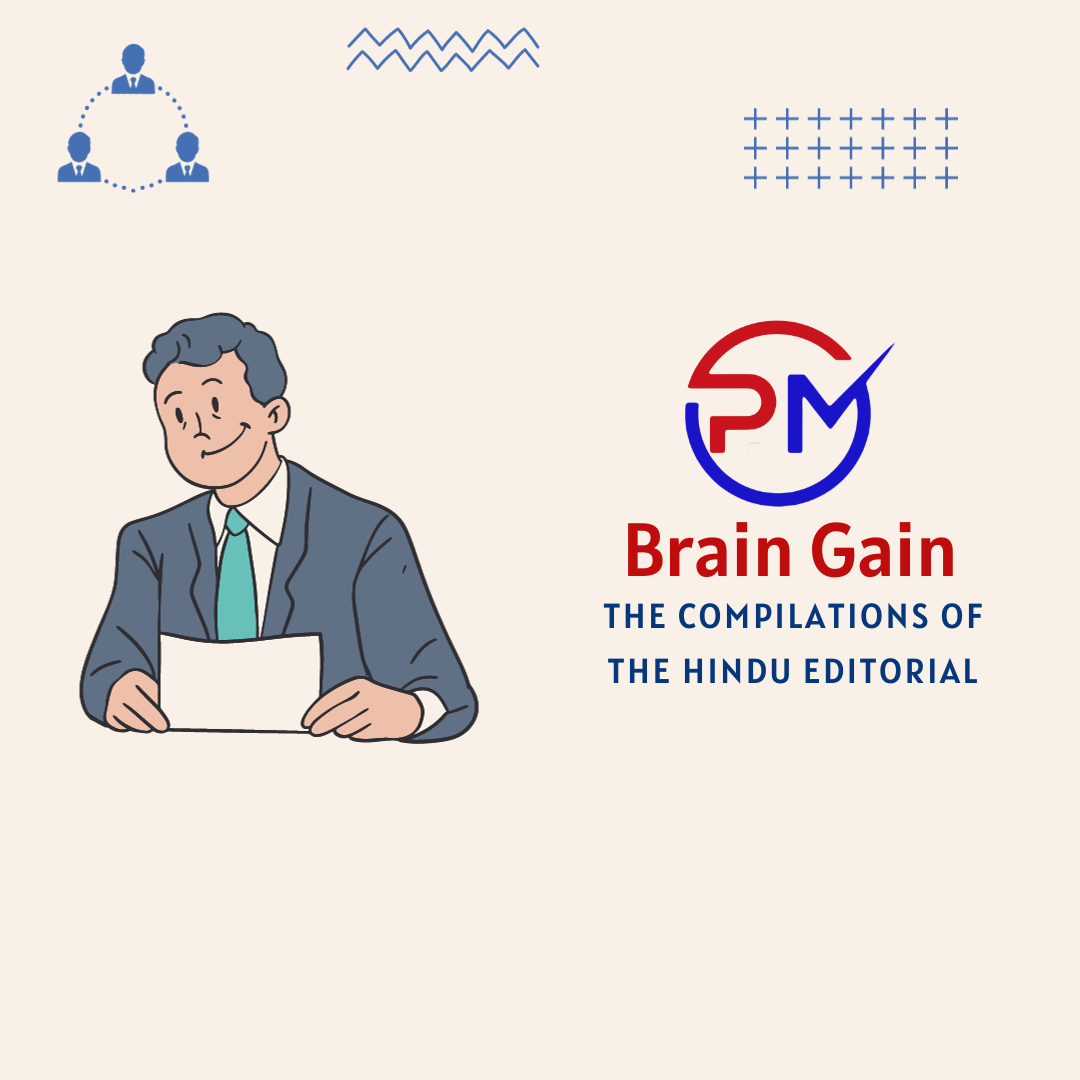Editorial 1 : How universities and industry can collaborate
Introduction:
- It is well known that collaborations between industry and academia can be mutually beneficial. However, most Indian higher education institutions (HEIs) have not focused on such collaborations or on intellectual property rights (IPRs) and transfer of technology (ToT).
Issues with Indian HEIs:
- While universities conduct and encourage basic research, many of them do not capitalise on the same research by commercialising their IPR; they miss out on likely gains from patents, licensing, or startup companies. Determining and managing impediments to collaborations between industry and academia requires a multipronged approach.
Industry- Academia collaboration:
- First, HEIs and industry can only collaborate if they evolve shared goals. HEIs predominantly seek to educate students and conduct research. They often focus on creating theoretical knowledge. On the other hand, industries are profit driven and pursue practical applications of knowledge to enhance productivity and innovation.
- To resolve these issues, the two parties must engage in an open dialogue, develop a flexible attitude, and find common ground where theoretical knowledge and practical applications can coexist.
Cultural differences:
- Second, there are cultural differences between how HEIs and industrial partners approach the issue of collaboration.
- Let us say an HEI is collaborating with an industrial partner (a renewable energy company) on a research project associated with sustainable energy. When researchers at the HEI scrutinise the data furnished by the company, they may find that it needs more academic rigour and theoretical profoundness. Consequently, they might suppose that the data is of restricted use for publishing in a prestigious academic journal.
- Conversely, the company will focus more on practical outcomes. It may not have the time or expertise to have theoretical discussions since its immediate concern is to implement solutions in the real world by improving processes or by devising new products. So, both sides must find a middle path to bridge this cultural gap.
- HEI researchers could refine their findings into practical recommendations that the industrial partner can understand and implement, while the industrial partner could provide more context to the data.
Communication and training:
- Third, Indian HEIs must establish good communication channels with the industry. If a research team from a university is partnering with a pharmaceutical company, it needs to be acquainted with the industry’s regulatory processes.
- Training programmes could be implemented so that researchers and industry professionals get familiar with the other’s language and expectations.
Trust building:
- Fourth, Indian HEIs must focus on building trust. Let us suppose a university and a tech company are collaborating to develop a new software application. A professor may be an expert in developing algorithms, but the industrial partner may want solutions that can be implemented in real world products. Both parties can work out a mutually agreeable IPR arrangement to address this.
- Such an arrangement will also help alleviate certain fears. For instance, the university might agree to fasttrack the development of a prototype software application that the company can use and refine for commercial purposes.
- But the industrial partner may fear that the university researchers will publish the research results without considering the commercial implications of their research. To overcome this, the university and the industrial partner can sign nondisclosure agreements to ensure that sensitive information shared during collaboration remains confidential.
Both parties can also agree on which results may be earmarked for academic publications and which may be kept confidential or jointly published.
Types of collaborations
- Colleges or universities with minimal research facilities can focus on short term collaborations with local manufacturing companies facing technical problems in their production line that need a quick resolution. A team of students and faculty members from a college can provide a tangible solution that benefits the industry and brings returns to the college.
- On the other hand, universities with good research facilities and faculty expertise can partner with an industry for long term research collaborations that aim to develop cutting edge technologies. The additional benefit of such long term collaborations is that students can work as interns on research projects. They will then learn to handle deadlines, navigate failures, and collaborate with colleagues in the industry. HEIs and industries should, therefore, work on developing a symbiotic relationship.
- Industries in specific domains should collaborate with research groups across different universities in the same domain to keep themselves abreast of new research developments.
Conclusion:
- All this will become easier if government funding agencies announce suitable research grants and call for joint project proposals from HEIs and industry partners. There should also be critical annual reviews by a team of experts appointed by the funding agency to examine the deliverables promised by the stakeholders.
Editorial 2 : Understanding rat hole mining
Context:
- Two scientific methods of mining — vertical drilling and auger or horizontal drilling — were employed to rescue 41 workers on November 28 after 17 days of being trapped in the partially collapsed Silkyara tunnel in Uttarakhand. The last leg of the rescue involved rat hole mining. In the coal mines of Meghalaya, this crude method was banned by the National Green Tribunal (NGT) in 2014.
What is rat hole mining?
- Rat Hole mining, of two types, is so named as it involves digging tunnels 34 feet deep, barely allowing workers to crawl in and out. They have to squat while extracting coal with pickaxes. The side cutting type of mining is usually done on hill slopes by following a coal seam — dark brown or black banded coal deposited within layers of rock— visible from the outside.
- The second type called box cutting entails digging a circular or squarish pit at least 5 sq. metre in width up to a depth of 400 feet. Miners who drop down in makeshift cranes or using rope and bamboo ladders dig horizontally after finding the coal seam. The tunnels are dug in every direction from the edge of the pit, resembling the tentacles of an octopus.

Why is such mining banned?
- The government has little control over the land in Meghalaya, a Sixth Schedule State where the Coal Mines Nationalisation Act of 1973 does not apply. The landowners are thus also the owners of the minerals beneath. Coal mining boomed after Meghalaya attained statehood in 1972.
- However, the terrain and expenses involved discouraged mine owners from employing advanced drilling machines. So, labourers mainly from Assam, Nepal, and adjoining Bangladesh risked the hazards of rat hole mining — to earn thrice or four times as much as working in farms or construction sites.
Dangers and adverse impacts of rat hole mining:
- It includes asphyxiation because of poor ventilation, collapse of mines due to lack of structural support, and flooding.
- Apart from issues of safety and health, unregulated mining has led to land degradation, deforestation, and water with high concentrations of sulphates, iron, and toxic heavy metals, low dissolved oxygen, and high biochemical oxygen demand. At least two rivers, Lukha and Myntdu, became too acidic to sustain aquatic life.
- These factors led to the NGT banning rat hole mining in Meghalaya in 2014 while observing: “…there is umpteen number of cases where, by virtue of rat hole mining, during the rainy season, water flooded into the mining areas resulting in the death of many…”
- Illegal mining and transportation of coal, as mentioned in the interim reports of a one man committee appointed by the High Court of Meghalaya, has continued despite the ban and the loss of lives.
What led to the NGT ban?
- Environmentalists and human rights activists began flagging the hazards of rat hole mining in Meghalaya two decades ago. The campaign intensified after Impulse, a Meghalaya based NGO, began addressing the issue of human trafficking and child labour in such mines. They estimated that about 70,000 children mostly from Bangladesh and Nepal were employed in these mines because they were the right size to work in them. The NGT ban came a year later.
Current Status:
- Unlike in Chhattisgarh and Jharkhand, coal seams in Meghalaya are very thin. This, miners say, makes rat hole mining more economically viable than open-cast mining. The State has an estimated reserve of 576.48 million tonnes of lowash, high sulphur coal belonging to the Eocene age (3356 million years ago).
- The stakes for a section of locals have been so high that the State government has been under pressure to facilitate the resumption of mining legally.
- In May 2023, Meghalaya Chief Minister said that the Coal Ministry approved mining leases for 4 of the 17 prospective licence applicants. This would lead to the commencement of ‘scientific’ mining ensuring minimal environmental impact through sustainable and legally compliant extraction procedures.
- Anti-Mining activists, who are assaulted by miners off and on, said that ‘scientific’ would eventually be a fancy tag in a State where profit has driven coal mining.
Conclusion:
- Government should examine completely banning rat hole mining except for use in rescue operations, as seen in the recent Silkyara tunnel rescue.


